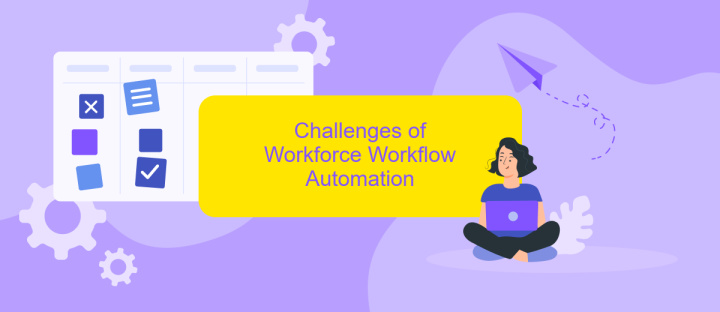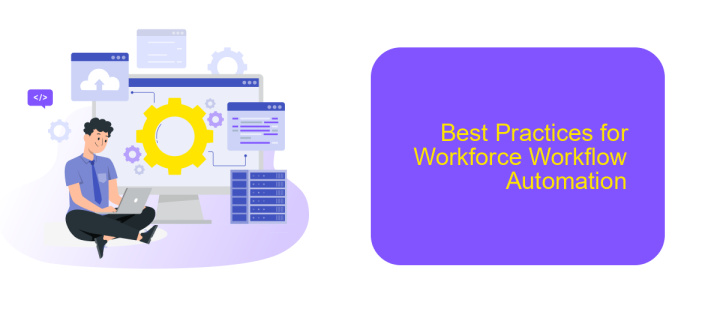Workforce Workflow Automation Solution
In today's fast-paced business environment, optimizing workforce efficiency is crucial. Workforce Workflow Automation Solutions streamline operations by automating repetitive tasks, reducing errors, and freeing up valuable time for employees to focus on strategic activities. This article explores the benefits of implementing these solutions, key features to look for, and how they can transform your organization's productivity and overall performance.
Introduction
In today's fast-paced business environment, organizations are constantly seeking ways to enhance efficiency and productivity. Workforce workflow automation solutions have emerged as a critical tool in achieving these goals. By automating repetitive tasks and streamlining processes, companies can free up valuable time and resources, allowing employees to focus on more strategic activities.
- Improved efficiency through task automation
- Enhanced productivity by reducing manual errors
- Seamless integration with existing systems
- Scalability to accommodate growing business needs
One such solution that facilitates seamless integration is ApiX-Drive. This service enables businesses to easily connect various applications and automate workflows without requiring extensive technical expertise. By leveraging ApiX-Drive, companies can ensure that their automated processes are both efficient and reliable, ultimately driving better business outcomes.
Benefits of Workforce Workflow Automation

Workforce workflow automation significantly enhances productivity by streamlining repetitive tasks and reducing manual intervention. Automated workflows ensure that tasks are completed consistently and accurately, minimizing the risk of human error. This leads to faster turnaround times and allows employees to focus on more strategic activities that add value to the organization. Additionally, automation provides real-time visibility into task progress, enabling better tracking and management of projects.
Another critical benefit is the seamless integration of various tools and systems, which is made easier with services like ApiX-Drive. ApiX-Drive allows businesses to connect multiple applications effortlessly, ensuring that data flows smoothly between different platforms. This integration capability reduces the need for manual data entry and enhances overall operational efficiency. By automating workflows and integrating systems, organizations can achieve higher levels of efficiency, accuracy, and agility, ultimately driving better business outcomes.
Challenges of Workforce Workflow Automation

Implementing workforce workflow automation can significantly enhance productivity and streamline operations. However, this transformation is not without its challenges. Organizations often face several obstacles in the journey towards seamless automation.
- Integration Complexity: Integrating various tools and systems can be a daunting task. Ensuring all components work harmoniously requires meticulous planning and execution.
- Data Security and Privacy: Automating workflows involves handling sensitive employee and business data. Protecting this information from breaches and ensuring compliance with regulations is critical.
- Employee Resistance: Change can be met with resistance from employees who are accustomed to traditional workflows. Training and support are essential to ease the transition.
- Cost and Resource Allocation: Initial setup and ongoing maintenance of automated systems can be resource-intensive. Allocating budget and manpower effectively is crucial.
- Scalability Issues: As the organization grows, the automated workflows must scale accordingly. Ensuring the system can handle increased workload without compromising performance is a challenge.
To address integration complexities, services like ApiX-Drive can be particularly useful. ApiX-Drive simplifies the process of connecting various applications and automating data transfer, making it easier for organizations to achieve seamless workflow automation. By leveraging such tools, companies can mitigate some of the common challenges and fully realize the benefits of workforce workflow automation.
Best Practices for Workforce Workflow Automation

Implementing workforce workflow automation can significantly enhance productivity and efficiency. To achieve the best results, it's important to follow some key practices. First, start by clearly defining your goals and identifying the specific processes that need automation. This will help you focus on areas with the highest impact.
Next, choose the right tools and platforms that align with your business needs. For instance, ApiX-Drive offers seamless integration capabilities, allowing you to connect various applications and streamline your workflows effortlessly. Properly configuring these integrations ensures that data flows smoothly between systems, reducing manual intervention and errors.
- Define clear goals and objectives for automation.
- Select tools that offer robust integration capabilities, like ApiX-Drive.
- Ensure data accuracy and consistency across all systems.
- Regularly monitor and optimize automated workflows.
- Provide training and support for employees to adapt to new systems.
Finally, continuously monitor and refine your automated workflows. Regularly review performance metrics and gather feedback from employees to identify areas for improvement. By staying proactive and adaptable, you can ensure that your workforce workflow automation remains effective and delivers ongoing benefits.


Conclusion
In conclusion, implementing a workforce workflow automation solution significantly enhances operational efficiency and productivity. By automating repetitive tasks, businesses can allocate resources more effectively, allowing employees to focus on higher-value activities. This not only reduces errors but also accelerates project timelines, fostering a more agile and responsive work environment.
Moreover, integrating such solutions with existing tools and platforms is streamlined with services like ApiX-Drive. This platform facilitates seamless data transfer and synchronization between various applications, ensuring that all systems work in harmony. As a result, companies can achieve a cohesive and well-orchestrated workflow, driving better outcomes and sustained growth. Embracing automation is no longer a luxury but a necessity for staying competitive in today's fast-paced business landscape.
FAQ
What is Workforce Workflow Automation?
How can Workforce Workflow Automation benefit my business?
What types of processes can be automated?
How do I get started with implementing Workforce Workflow Automation?
Is it difficult to integrate automation solutions into existing systems?
Apix-Drive is a simple and efficient system connector that will help you automate routine tasks and optimize business processes. You can save time and money, direct these resources to more important purposes. Test ApiX-Drive and make sure that this tool will relieve your employees and after 5 minutes of settings your business will start working faster.

